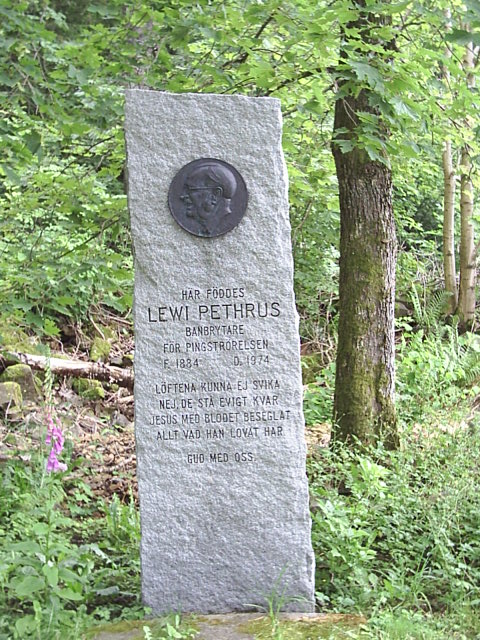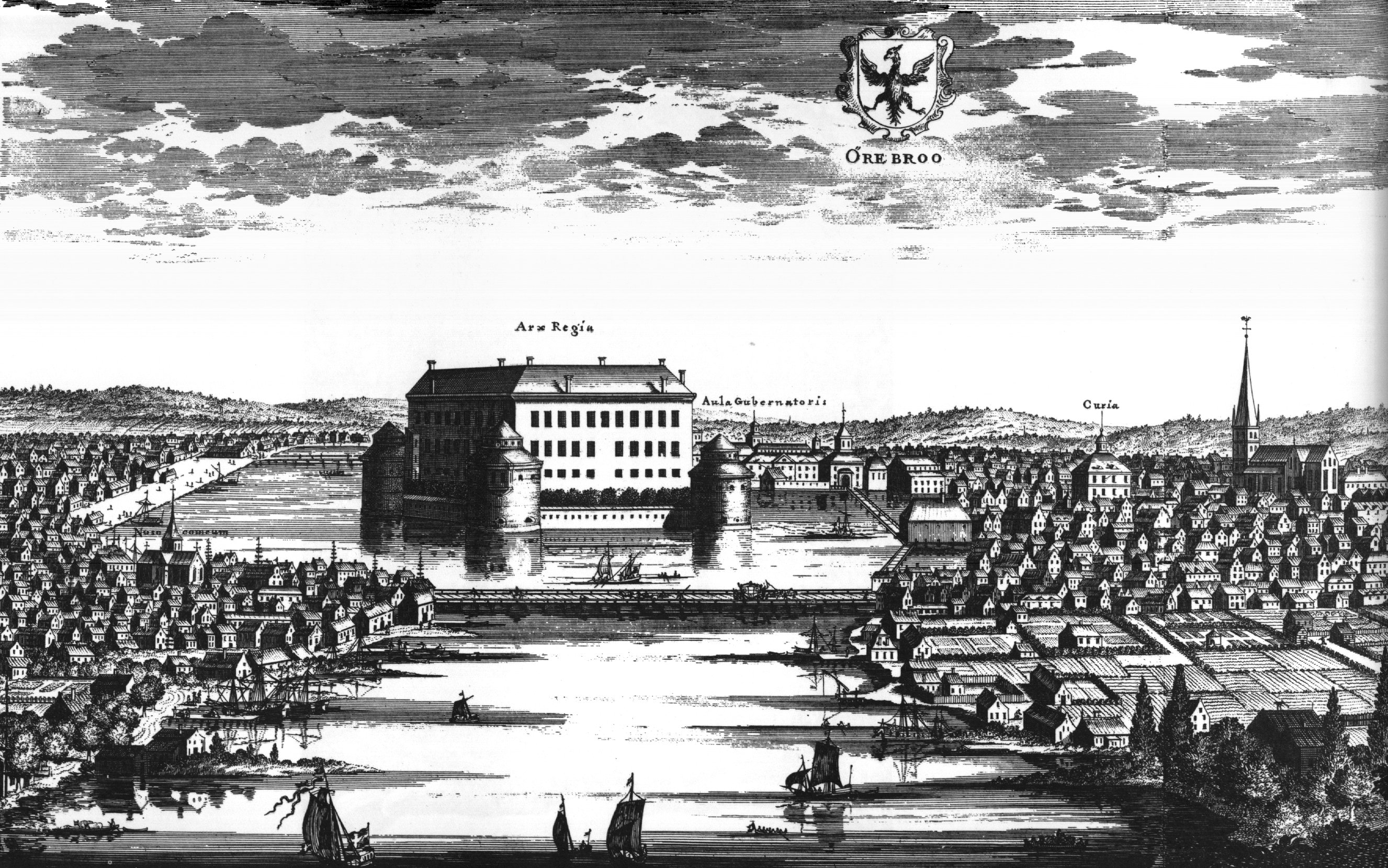|
Swedish Pentecostal Movement
The Swedish Pentecostal Movement ( sv, Pingströrelsen i Sverige) is a Pentecostalism, Pentecostal movement in Sweden. Many, but not all, of these, are members of the The Pentecostal Alliance of Independent churches, Pentecostal Alliance of Independent Churches, which was founded in 2001.William Kay, Anne Dyer, ''European Pentecostalism'', Brill, UK, 2011, p. 36. The Pentecostal movement spread to Sweden by 1907 from the 1904–1905 Welsh revival, 1904–1905 Welsh Revival and the Azusa Street Revival in Los Angeles in 1906. The Pentecostal Alliance of Independent Churches is made up of 439 churches and 87,392 members ,Pentecostal Alliance of Independent ChurchesStatistik, pingst.se, Sweden, retrieved May 9, 2020 making it one of Sweden's largest free church organizations. The Pentecostal movement is also part of the broader Charismatic Christianity (which includes both Pentecostals and the Charismatic movement, non-Pentecostal Charismatic movement). Size of the Pentecostal move ... [...More Info...] [...Related Items...] OR: [Wikipedia] [Google] [Baidu] |
Filadelfiakyrkan
('the Philadelphia Church') is a Pentecostal church building at Rörstrandsgatan 7 in Stockholm, Sweden; it was dedicated on 2 November 1930. The building is owned by the Filadelfia Stockholm congregation, the largest congregation in the Swedish Pentecostal movement with about 5,400 members as of 2015. It is also the largest Pentecostal congregation in Europe. The Stockholm City Museum has listed the building as having a particularly high historical and cultural value. The church building is next to Rörstrand Castle, where Kaggeholm Folk High School has been located since 2019. In connection with the COVID-19 pandemic, the church building was completely remodeled for over 100 million SEK. Building description The church was built in 1929–1930 according to plans by architect Birger Jonson and was constructed by Karl Ljungberg's construction company and consecrated on 2 November 1930. The church was built on the old factory site of Rörstrand Porcelain, where part of t ... [...More Info...] [...Related Items...] OR: [Wikipedia] [Google] [Baidu] |
Skövde
Skövde () is a locality and urban centre in Skövde Municipality and Västra Götaland County, in the Västergötland (Western Gothland region) in central Southern Sweden. Skövde is situated some 150 km northeast of Gothenburg, between Sweden's two largest lakes, Vänern and Vättern. It lies on the eastern slope of a low mountain ridge, Billingen (304 m), which cuts through the plain between the lakes. The Western Main Railway ( Västra Stambanan) was built through Skövde in the 1850s, which gave the town a dramatic industrial and population boost. Today, Skövde is home to the headquarters for Skaraborg's District Court and is the Västra Götaland's fourth-largest urban area as well as Sweden's 32nd biggest locality (by population) with 39,580 inhabitants in 2020. History Skövde traces its history back to the Medieval Age. In Skövde's city coat of arms is the image of Saint Elin (also known as Saint Helena), who was considered a pious woman from Skövde. She ... [...More Info...] [...Related Items...] OR: [Wikipedia] [Google] [Baidu] |
Per Hörnmark
Per is a Latin preposition which means "through" or "for each", as in per capita. Per or PER may also refer to: Places * IOC country code for Peru * Pér, a village in Hungary * Chapman code for Perthshire, historic county in Scotland Math and statistics * Rate (mathematics), ratio between quantities in different units, described with the word "per" * Price–earnings ratio, in finance, a measure of growth in earnings * Player efficiency rating, a measure of basketball player performance * Partial equivalence relation, class of relations that are symmetric and transitive * Physics education research Science * Perseus (constellation), standard astronomical abbreviation * Period (gene) or ''per'' that regulates the biological clock and its corresponding protein PER * Protein efficiency ratio, of food * PER or peregrinibacteria, a candidate bacterial phylum Media and entertainment * PeR (band), a Latvian pop band * ''Per'' (film), a 1975 Danish film Transport * IATA cod ... [...More Info...] [...Related Items...] OR: [Wikipedia] [Google] [Baidu] |
Sven Lidman (writer)
Carl Hindrik Sven Rudolphsson Lidman (June 30, 1882 – February 14, 1960)—military officer, poet, writer, and preacher, grandson of the priest Sven Lidman—was born in Karlskrona, became a sublieutenant in the Swedish royal army reserve in 1903, and studied law at Uppsala University. He then began a promising career as a celebrated poet with ''Pasiphaë'' (1904), ''Primavera'' (1905), ''Källorna'' (1906), and ''Elden och altaret'' (1907). He also wrote the dramas ''Imperia'' (1907) and ''Härskare'' (1908), before starting to write novels: ''Stensborg'' (1910), ''Thure Gabriel Silfverstååhl'' (1910), ''Carl Silfverstååhls upplevelser'' (2nd edition, 1912), ''Köpmän och krigare'' (3rd edition, 1911), ''Tvedräktens barn'' (1913), and ''Det levande fäderneshuset'' (1916). In 1917 he went through a religious revival, which came out in his novels ''Huset med de gamla fröknarna'' (5th edition, 1919), ''Såsom genom eld'' (5th edition, 1920), ''Bryggan håller'' (1923), ... [...More Info...] [...Related Items...] OR: [Wikipedia] [Google] [Baidu] |
Eucharist
The Eucharist (; from Greek , , ), also known as Holy Communion and the Lord's Supper, is a Christian rite that is considered a sacrament in most churches, and as an ordinance in others. According to the New Testament, the rite was instituted by Jesus Christ during the Last Supper; giving his disciples bread and wine during a Passover meal, he commanded them to "do this in memory of me" while referring to the bread as "my body" and the cup of wine as "the blood of my covenant, which is poured out for many". The elements of the Eucharist, sacramental bread ( leavened or unleavened) and wine (or non-alcoholic grape juice), are consecrated on an altar or a communion table and consumed thereafter, usually on Sundays. Communicants, those who consume the elements, may speak of "receiving the Eucharist" as well as "celebrating the Eucharist". Christians generally recognize a special presence of Christ in this rite, though they differ about exactly how, where, and when Chr ... [...More Info...] [...Related Items...] OR: [Wikipedia] [Google] [Baidu] |
Baptist Union Of Sweden
The Baptist Union of Sweden ( sv, Svenska Baptistsamfundet) is the oldest of several Baptist bodies in Sweden. The first-known Baptist church in Sweden was organized on September 21, 1848, in Vallersvik, where a group of people committed the first-known Baptist baptism in Sweden. The Conventicle Act was in effect at the time, outlawing all religious meetings other than those of the Lutheran Church of Sweden. The new movement's leader, F.O. Nilsson, was exiled. Others were fined or jailed. A few years later, in 1858, the law was abolished, and religious groups other than the official state church (free churches) were allowed to work. History A general conference was formed in 1857 through the work of pastor Anders Wiberg and others. By 1866, the conference had established a seminary, Betelseminariet, and the conference later formed the Swedish Baptist Union in 1889. In 1934 the Swedish Baptist Union attained its peak, with 68,000 members. In 2006 it reported a total of 17,000 m ... [...More Info...] [...Related Items...] OR: [Wikipedia] [Google] [Baidu] |
Lewi Pethrus
Lewi Pethrus (born ''Pethrus Lewi Johansson'') (11 March 1884 – 4 September 1974) was a Swedish Pentecostal minister who played a decisive role in the formation and development of the Pentecostal movement in his country. In 1964, he founded the political party the Christian Democrats. Life Pethrus was born in 1884 in Vargön, Västergötland. He held manual jobs from the age of ten, being apprenticed to a shoe factory in 1899. That year, he was baptized in the Baptist church in Vänersborg. After emigrating to Norway in 1900, he became co-pastor of the Arendal Baptist Church in 1902, along with Adolf Mildes. He started speaking in tongues, believed by Pentecostals to be evidence of having received the baptism of the Holy Spirit after a series of meetings in Lillestrand. He claimed that the experience happened to him spontaneously and that he did not understand at the time what was happening to him. Pethrus became pastor of a small Baptist church in Bengtsfors, Dalsla ... [...More Info...] [...Related Items...] OR: [Wikipedia] [Google] [Baidu] |
Örebro
Örebro ( , ) is the List of urban areas in Sweden by population, sixth-largest city in Sweden, the seat of Örebro Municipality, and capital of the Örebro County. It is situated by the Närke Plain, near the lake Hjälmaren, a few kilometers inland along the small river Svartån, Närke, Svartån, and has a population of approximately 126,000 in the city proper. It is one of the largest inland hubs of the country, and a major Logistics, logistic and commercial operating site. Örebro is home to Örebro University, a Örebro University Hospital, major university hospital, a Örebro Castle, medieval castle, the water park Gustavsvik as well as several large shopping malls and the Oset-Rynningeviken nature reserve at the lakefront. Örebro is served by Örebro Airport 10 km (6 mi) southwest of the city, and by Örebro Central Station, serviced by the Mälaren Line and Western Main Line. Etymology The name ''Örebro'' refers to a bridge (') crossing the river Svartån, Närke, S ... [...More Info...] [...Related Items...] OR: [Wikipedia] [Google] [Baidu] |
John Ongman
John Ongman (November 15, 1844 – February 28, 1931) was a Swedish Baptist pastor and founder of the Örebro Missionary Society and Örebro Missionary School. He also was the first pastor of the First Swedish Baptist Church in Saint Paul, Minnesota and also a pastor of the First Swedish Baptist Church in Chicago. He was an energetic evangelist and influential leader of the Swedish Baptists both in America and Sweden. Upbringing He was the fourth of six siblings and grew up in a Christian home. His father, Nils Sköld, was a soldier by profession and his mother, Maria Laurentia Sten, came from a blacksmith family with roots in Norway. Ongman went to school for four years and at the age of 17 he traditionally enlisted as a soldier in the Jämtland Ranger Corps to follow in his father's footsteps. It was in the military that he was given the name Ångman (possibly because at the age of 18 he lived in Ångmon/Ångron), which was later rewritten in English as Ongman. Conversion a ... [...More Info...] [...Related Items...] OR: [Wikipedia] [Google] [Baidu] |
Örebro Mission
The Örebro Mission ( sv, Örebromissionen) was a Protestant denomination in Sweden. It was founded in Örebro in 1892 by Baptist pastor John Ongman and was part of the Baptist Union of Sweden until 1936. In 1997, the denomination became part of the Evangelical Free Church in Sweden The Evangelical Free Church in Sweden ( sv, Evangeliska frikyrkan is a Baptist Christian denomination in Sweden. The headquarters is in Örebro Örebro ( , ) is the sixth-largest city in Sweden, the seat of Örebro Municipality, and capit .... References External links {{DEFAULTSORT:Orebro Mission 1892 establishments in Sweden 1997 disestablishments in Sweden Protestantism in Sweden Christian organizations disestablished in 1997 Christian organizations established in 1892 History of Örebro Culture in Örebro Christian denominations in Sweden ... [...More Info...] [...Related Items...] OR: [Wikipedia] [Google] [Baidu] |
Cornell University Press
The Cornell University Press is the university press of Cornell University; currently housed in Sage House, the former residence of Henry William Sage. It was first established in 1869, making it the first university publishing enterprise in the United States, but was inactive from 1884 to 1930. The press was established in the College of the Mechanic Arts (as mechanical engineering was called in the 19th century) because engineers knew more about running steam-powered printing presses than literature professors. Since its inception, The press has offered work-study financial aid: students with previous training in the printing trades were paid for typesetting and running the presses that printed textbooks, pamphlets, a weekly student journal, and official university publications. Today, the press is one of the country's largest university presses. It produces approximately 150 nonfiction titles each year in various disciplines, including anthropology, Asian studies, biologica ... [...More Info...] [...Related Items...] OR: [Wikipedia] [Google] [Baidu] |




